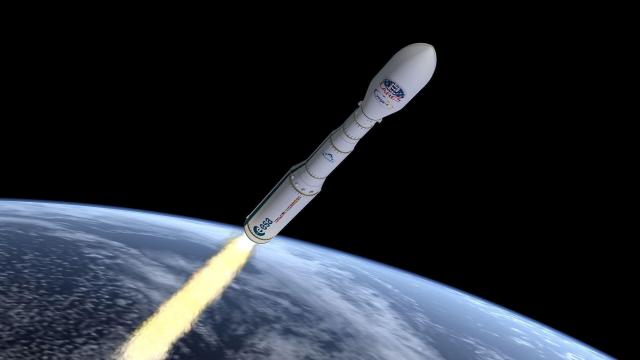The European Space Agency (ESA) is getting ready to unveil its medium-lift Vega-C rocket, a worthy successor to the small launcher Vega, which has been in operation for 10 years. Vega-C is undergoing final preparations before launching from Europe’s Spaceport in French Guiana as soon as July 7, ESA announced on Thursday.
Vega-C is currently ready for payload integration, and final checks before its inaugural launch, according to ESA. The rocket follows its predecessor Vega, which launched on February 13, 2012. With Vega, named after the brightest star in the constellation Lyra, ESA initiated an era of new-generation vehicles delivering small to medium sized satellites in orbit for both scientific and Earth observation missions. Vega is a single body launcher, with no booster, but instead has three solid propulsion stages and an additional liquid propulsion upper module.
“Vega-C features major enhancements from Vega, both in the rocket and its ground infrastructure,” Renato Lafranconi, Vega programs manager, said in a statement. Vega-C was fitted with a new, more powerful first and second stage, and an improved, re-ignitable upper stage. This gives the rocket a larger capacity for liquid propellant, allowing it to deliver payloads to multiple orbits, and stay in space for a longer period of time. Vega-C also has double the payload capacity, measuring at around 34.75 m high, which is nearly 5 metres taller than its predecessor.
Vega-C can also orbit larger satellites, carry two main payloads, or be used for rideshare missions, which allows for a number of small satellites to be transported to space at a relatively low cost.
For its launch debut, Vega-C will carry the Italian Space Agency’s LARES-2, a scientific mission designed to measure a distortion of space-time caused by a large body such as the Earth. The mission’s predecessor, LARES, was also the main payload for Vega’s inaugural flight in 2012. Also hitching the ride to space are six CubeSats from Italy, France, and Slovenia, testing different phenomena such as the effects of a harsh radiation environment on electronic systems, growing plants in microgravity, and the Northern, and Southern Lights.
ESA is also getting ready to debut Ariane 6, the next-generation launcher to follow Ariane 5. Ariane 6 was originally slated for launch in 2020, but has suffered numerous delays, and is now scheduled to fly in 2023. “With Vega-C and Ariane 6, Europe will have a flexible, independent solution for a fast-changing launch market,” Daniel Neuenschwande, ESA’s director of Space Transportation, said in a statement.
More: European Space Agency Lays Out Plans for Next 30 Years of Space Exploration
